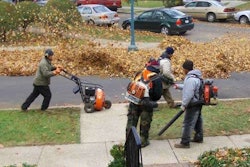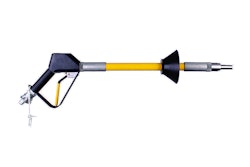 Photo: Oklahoma State University Yard and Landscape IPM.
Photo: Oklahoma State University Yard and Landscape IPM.When protecting a landscape from the devastating effects of insects, it’s not enough to simply treat plants and turf with chemicals after pests invade.
Professional landscapers have to employ a combination of solutions aimed at preventing pest problems. Integrated Pest Management (IPM) uses economically and environmentally sustainable practices to strengthen and stabilize the landscape, creating conditions more favorable to plants than pests.
IPM programs consists of the following practices:
- Scouting and monitoring includes regular inspection of plants for insects, as well as observation of the overall health of the landscape. Then, base pest-management decisions on the correlation of landscape development stages and pest activity.
- Accurate pest identification will significantly improve any IPM program. Monitoring a species’ life cycle and behavior can help landscape professionals detect subtle changes in a complex of pest species.
- Inspecting plants’ physical damage can provide a wealth of information about the types of pests in a landscape. Know the cause of foliage injury, inspect for arthropods and learn to recognize different feeding patterns such as chewing, rasping or sucking.
- Determine action thresholds when pests become intolerable, keeping in mind that the goal of a successful IPM is not an insect-free landscape. Consider removing a chronically infested plant with a non-host variety, and preserve any natural enemies of the pest when possible. The use of the least-toxic chemical controls should be used as a last resort.










